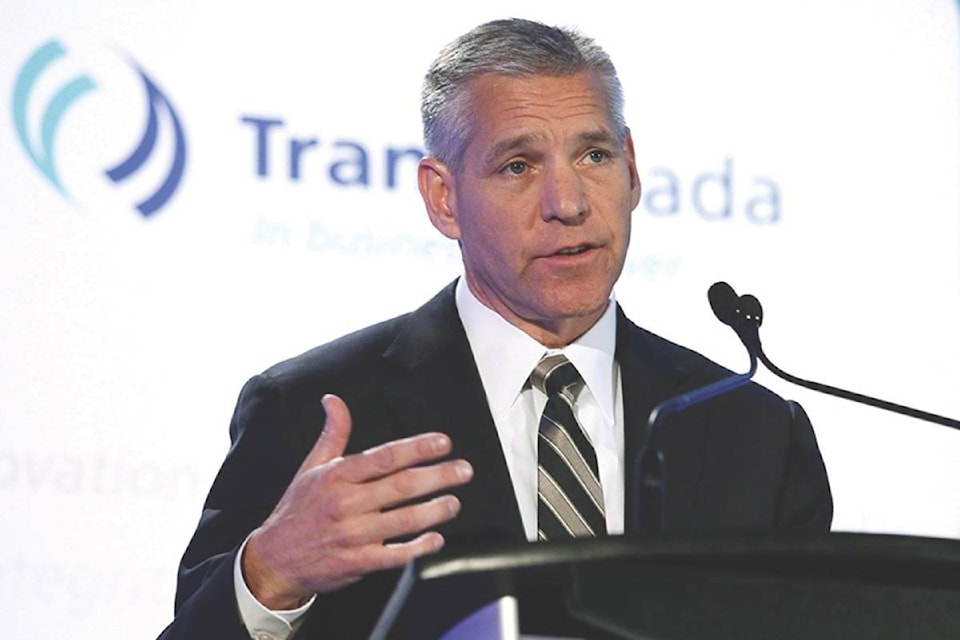CALGARY — TransCanada Corp. is looking to boost its capacity to export natural gas east and south from the rich reserves of Western Canada as dreams of sending the gas to Asia fade further into the distance.
The company (TSX:TRP) announced Friday a modest $160-million program to add capacity with more compressors on its Canadian Mainline system in southern Ontario so it can bring more gas to the province and Atlantic Canada, adding to the $2-billion commitment in June to expand its northeastern B.C. gas pipeline system to get more gas out of the region.
The moves come as the potential to shift the gas west to liquefied natural gas plants becomes more remote, with Petronas and its partners giving up on the $11.4-billion Pacific Northwest LNG export terminal on Tuesday, while last year, Shell and its partners indefinitely delayed a final decision on the LNG Canada project.
TransCanada had big hopes of moving gas to the West Coast, with the $5-billion Prince Rupert Gas Transmission project planned to service the Petronas project and the $4.8-billion Coastal GasLink designed to serve LNG Canada’s terminal.
Company CEO Russ Girling said it’s important to continue to expand export capacity wherever possible as the size of Western Canada’s gas resource continues to grow, and the costs to extract it drop.
“It appears there’s a lot more gas than anybody ever anticipated that can be recovered at ever-decreasing costs,” said Girling on an analyst call Friday.
“The desire to access existing North American markets is becoming more and more important, as these folks determine they can produce more gas.”
Girling said efforts to expand capacity east and south after West Coast delays doesn’t mean the company is abandoning the LNG potential.
“That doesn’t mean that we’re not going to continue to look at trying to get to the West Coast, but I think everybody realizes that that’s a difficult and longer-term prospect, and in the shorter run we’re focused on Pacific Northwest, California, moving gas east and south and out of the Western Sedimentary Basin.”
The cancellation of PNW LNG means TransCanada will get back the roughly $500 million it had already spent on the PRGT project, estimated RBC Capital Markets analyst Robert Kwan.
TransCanada says the continued delays on LNG Canada means it stands to get a one-time $80-million cheque for its Coastal GasLink project, plus $7 million every quarter until further notice.
The company knows well not to give up hope on long-shot projects, as it works to move ahead on the controversial Keystone XL pipeline project that many once thought dead.
On Thursday the company launched an open season for the pipeline, looking to add 225,000 barrels a day of firm commitments on the line that would ship about 830,000 barrels a day from Alberta to markets in Oklahoma and the U.S. Gulf Coast.
The company has been working to reconfirm shipper interest since U.S. President Donald Trump approved the pipeline in March, reviving a project thought dead after former president Barack Obama rejected it in 2015.
On the quarterly earnings call Friday, TransCanada said it expects a hearing on the contentious Nebraska route of the pipeline in August, and a decision on it by November.
The company earned $881 million in the quarter ending June 30, or $1.01 per diluted share, compared with a profit of $365 million or 52 cents per diluted share in the same quarter last year, as it incorporated Columbia Pipeline Group’s assets following last year’s US$13-billion takeover.
